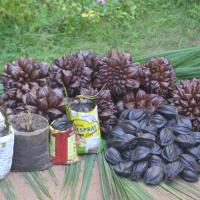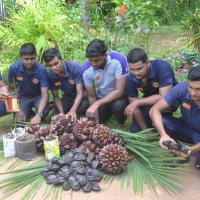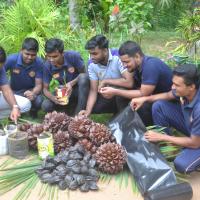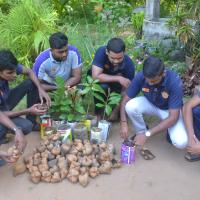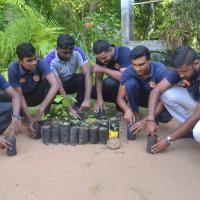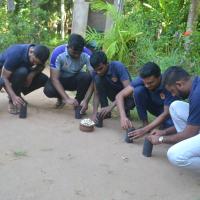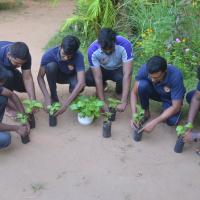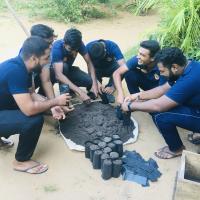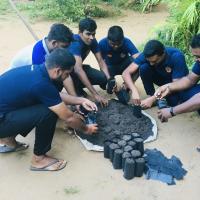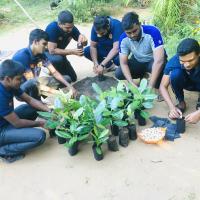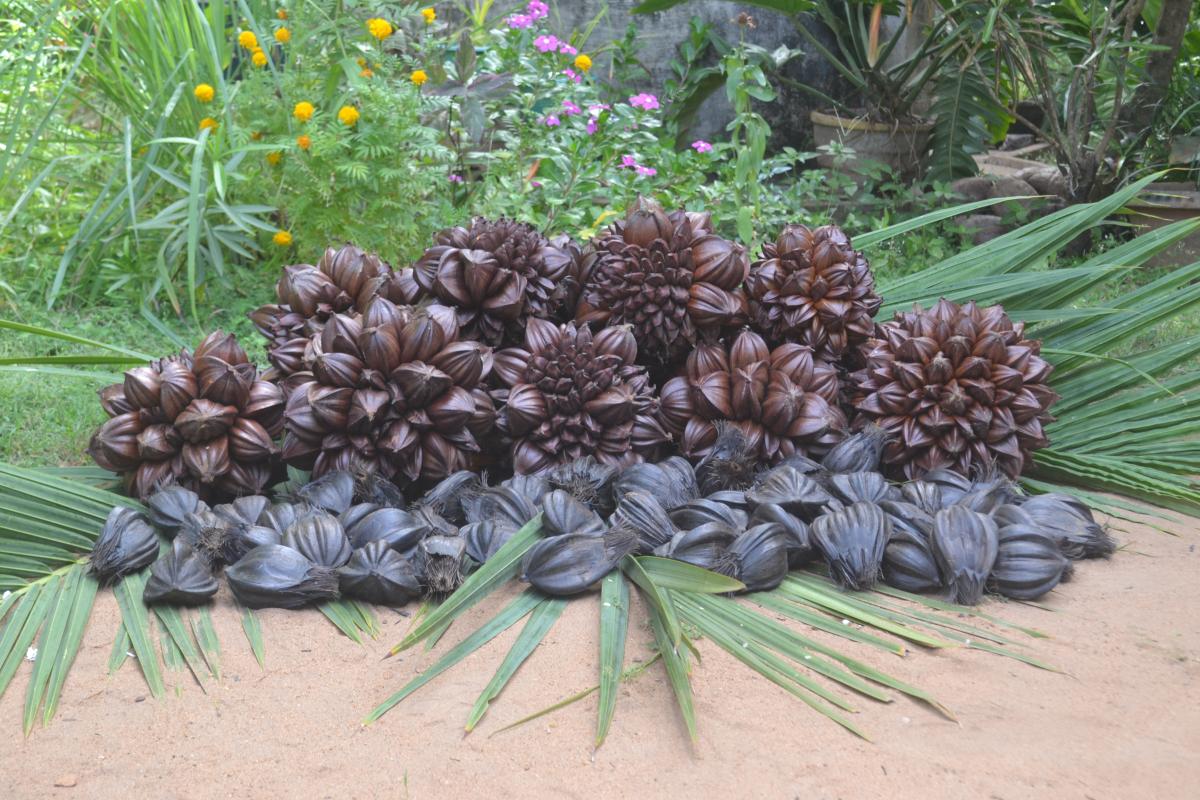
An Environment Action Plan Of Wennappuwa Scout District
Executive Summary
The Rover scouts' District of Wennappuwa consists with the four Divisions of Wennappuwa, Dankotuwa, Nattandiya and Mahawewa. The whole population is 289424. (According to the sources of the year 2018) The extension of this land which consists with a system Tanks, a long Beach and a well-bearing range of paddy fields is 257.696km2. This land belongs to the Intermediate wet zone. The land area of which the main occupation is Agriculture and Fishing consist with a soil which is suitable for agriculture and also consists with an Internal Forest population and a system of Mangrove Vegetation, The small forest called "Kalu Mukalana" of which the extension of approximately 90 Acres, belonging to the Divisional Secretariat of Dankotuwa and it consists with flora of Dipterocapaceae which are endemic to the wet zone. The view of the environmentalists is that it is a natural awesome phenomenon. The population of Nypa which are grown and spread from the Internal Area of the Nainamadama Wellamankara Estuary Area towards the Internal Area of the country which belongs to the species of Palme Trees gives a significant value to the system of environment. The damage caused by the human activities to the plants of medicinal value has become very difficult to be evalued. Although the transport facilities have also been provided and an economic reawakening has also been brought by joining the both villages of Iranawila and Thoduwawa together by constructing the bridge over the Sandstone Platau, By today a threat has been created to how saline water flow through the waterways upto the town of Nattandiya; because of the Sandstone Platau, which is a naturel filter has been deeply excavated.
In the same way the sand existing in the natural depositaries close to the reservoirs of the area frequently being excavated to get sand without any control and drinking water is also being spoiled at present.
In the same manner the dumping of garbage here and there, the removal of garbage without any plan and not properly refilling. The pits after excavating the land in obtaining has led to a tendency of approaching the Dengue hazard again. Therefore the beach which was properly kept maintained attractively, day by day it is going to be a dirty place filled with plastic debris, regiform debris other refuses. As such, it has become the main purpose of the scouts community to take prompt action to conserve the environment as a team of Rover Scouts Crew together with the coordinator of the program of M. O. P. for the sustainable existence of the environment in question.
The Action Plan of the Conservation of the Environment
- Conducting programmes for village Development Committees, Religious Organizations. School Scouting Communities including Youth Communities (The management of Plastics including Electronical debris)
- Identifying the significant systems of environments and collecting information for their sustainable existence and presentation of such information to relevant institutions.
- Launching Projects and Programmes according to the recommendations and instructions obtained from Coastal conservation Departments. The Authority of Marine Environment protection Central Environment Authority The Department of forest conservation The Department of wild Life conservation and the Universities Concaved
- Conducting a Plant Nursery for propagation activities identifying germination requirements and planting special species of plants at public, private and religious places.
- Conducting direct contacts with institutions that are engaged in restructurising institutions of plastic / polythene and updating the process such processes for coastal reservation.
- Preparation and forwarding records according to the collected information and experience of social and technical knowledge obtained in field work.
- Conducting a pool of resources in order to obtain the necessary assistance from individuals, institutions and organizations for reservation affairs.
The varities of Plants for the Environment Conservation Programme.
Sinhala NameEnglish NameBotnical Name 01. Kos Jack Wood Artocapas hetaropilas 02. Kohomba Margosa Asadirata indica 03. Domba Alexandrian Laurel Calopylam inopylam 04. Kurundu Cinnamon Cinnamomum Zeylahicum 05. Ginpol Water Coconut Nipa frnticans 06. Moodilla Barintonia Barintonia asiatica 07.Tekka Teak Wood Tektona grandis 08. Kadol Mangrove Rhizophora sp 09. Halmilla Trincomalee Wood Beria codipolia 10. Hora Diprocapcea Dipterocapus ceylenicus 11. Kumbuk White Murdah Traminaliya arjuna 12. Mahogani Mahoganee Svetenia macropila 13. Kahata Patna Oak Careya coccinea 14.Magulkaranda Indian Beach Pongamia pinnata 15.Mee (Mi) Honey Tree Madhuka longifolia
